There’s a reason why you’re more likely to die of a heart attack than click on a banner ad. Most display ads end up in front of the wrong audience.
Let’s be honest, who is actually going to click on an ad like this?

Now, not every display ad placement is as horrific as this one, but the truth remains — it’s hard to get your display ads seen by the right people.
However, if you’re willing to do a little homework, it is possible to get good results from your display advertising.
In fact, display advertising can be an excellent way to build brand awareness and get clicks, conversions, and sales from people who might not otherwise have an interest in your business… you just have to approach it the right way.
Fortunately, most of the targeting information you need can be found in your current analytics data — all you have to do is use it.
In this article, we’re going to discuss three easy ways to use your analytics data to improve your display ad targeting.
Ready? Let’s dive in.
1. Topic/Interest Targeting
Topic and interest targeting is an easy way to get your ads on a lot of websites. Unfortunately, if you don’t choose the right topics, you won’t end up in front of a relevant audience, and you’ll be right back where you started (showing ads to the wrong people).
For example, if you’re a company like Slack, Moz or Salesforce, you might pick a topic like “Business & Industrial > Advertising & Marketing > Marketing.”
Makes sense, right?
Unfortunately, that means your ad might show up on a website like www.getjar.com:
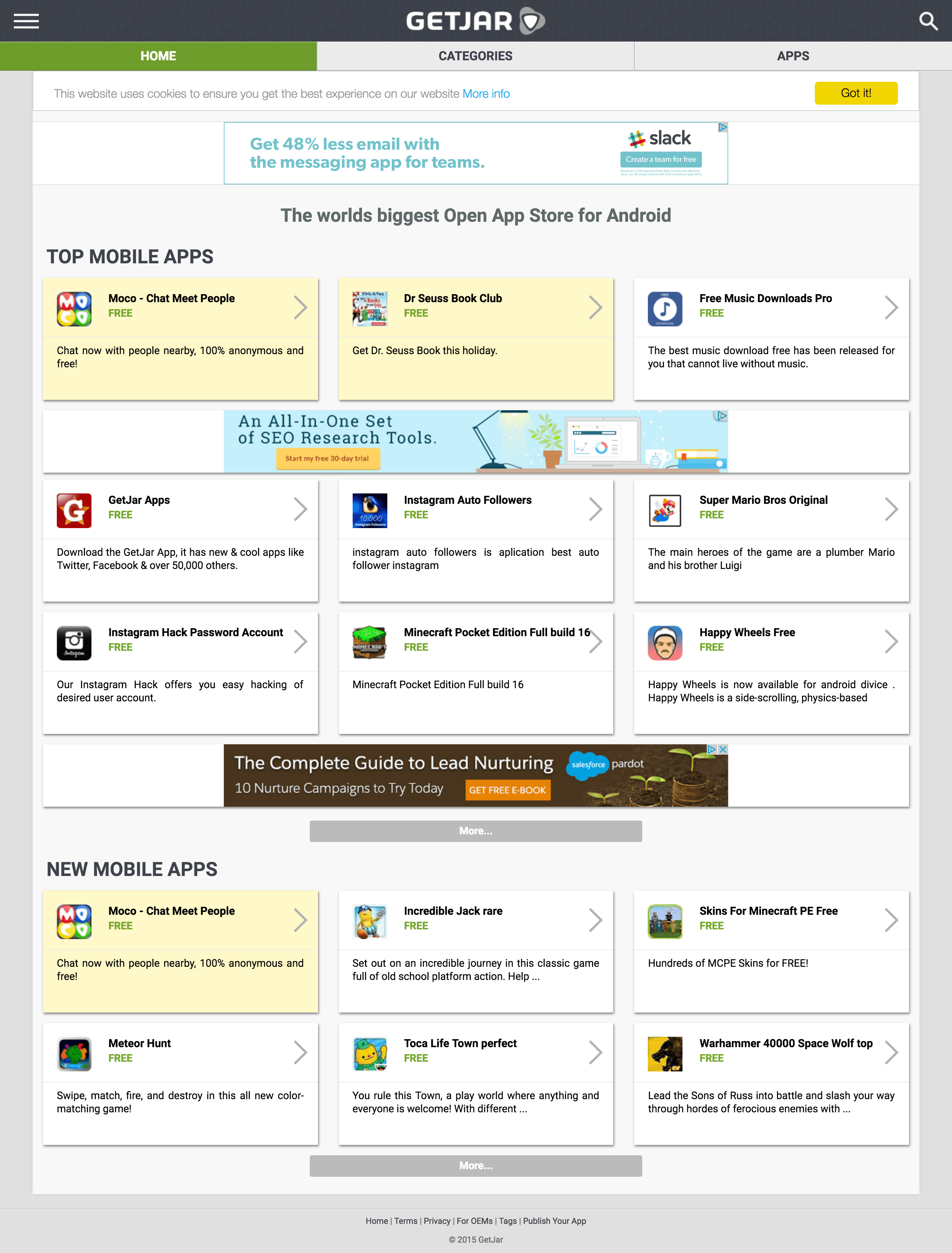
Good thing Instapage isn’t on there, eh?
A website that attracts people interested in hacking Instagram passwords or free music downloads probably isn’t the best place to advertise your customer relationship management (CRM) software.
Now, if Salesforce is targeting by interest, they might have used an in-market audience to target people who are in a CRM purchasing pattern, which might be why their ad is showing up on this page (I’ve been researching CRMs lately). This might increase the likelihood that an ad on GetJar gets clicked, but this placement is still far from ideal.
Fortunately, there’s a very easy fix for this.
First, you need to see where your ads are actually displaying. Open Google Ads, pick a reasonable time frame (I prefer 6-12 weeks), choose the appropriate campaign and click Display Network.
Click on “Placements” to see where your ads have been displayed:
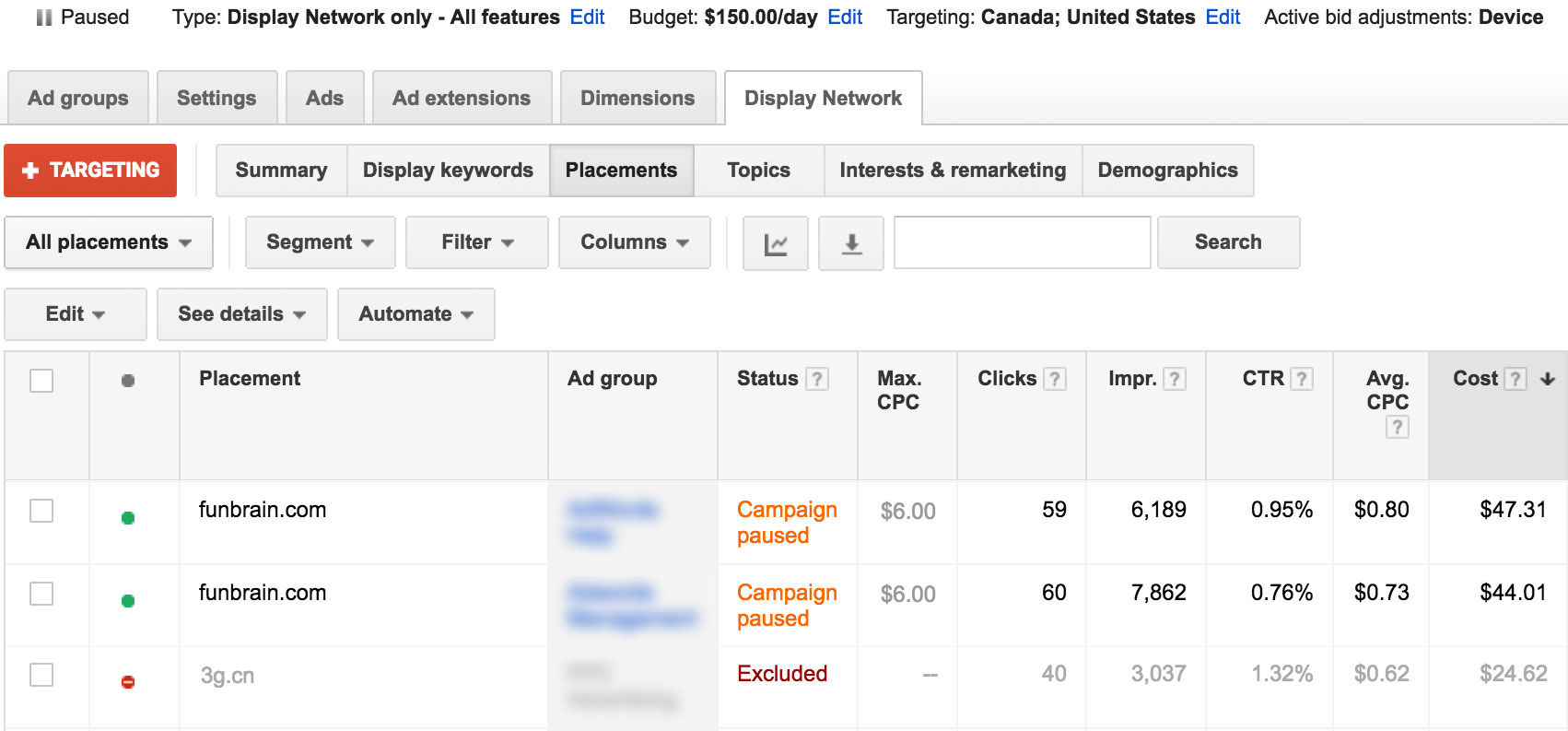
One quick note, if you have chosen specific websites where you want your ads to display, those placements will have a “Managed” status. Sites that Google chooses using your targeting setting have an “Automatic” status.
From there, sort by cost or impressions. Look at the conversion rates for traffic from the top sites on your lists — if you find a poor traffic source, check out the site to see if it even makes sense for your ads to be displaying on that site.
If a website doesn’t make sense for your business, click “Edit” and exclude it. If a site seems like a winner, click “+ Targeting” and add it as a managed placement.
It can take consistent time and effort to weed through your Placement list and find the best placements. However, this approach is a great way to improve the performance of a topic-based targeting approach.
2. Contextual Targeting
Contextual targeting takes a very different approach to figuring out where your ads should be displayed. With contextual targeting, you create lists of keywords that you want Google to use to identify candidate sites.
Depending on your business and keywords, this can be a great or terrible way to target your ads.
The problem is, contextual targeting relies on Google’s ability to match the intent of your keywords to the content — and by extension, audience — of a site.
For contextual targeting to work well, you need to identify the keywords and phrases that your target audience is searching for online. Fortunately, if you’re also running paid search campaigns, you can see exactly which search terms deliver the best results for your business.
To get at this information, choose a relevant time frame (again, I recommend at least 6-12 weeks) and click on the Keywords tab. Next, click on “Search terms:”
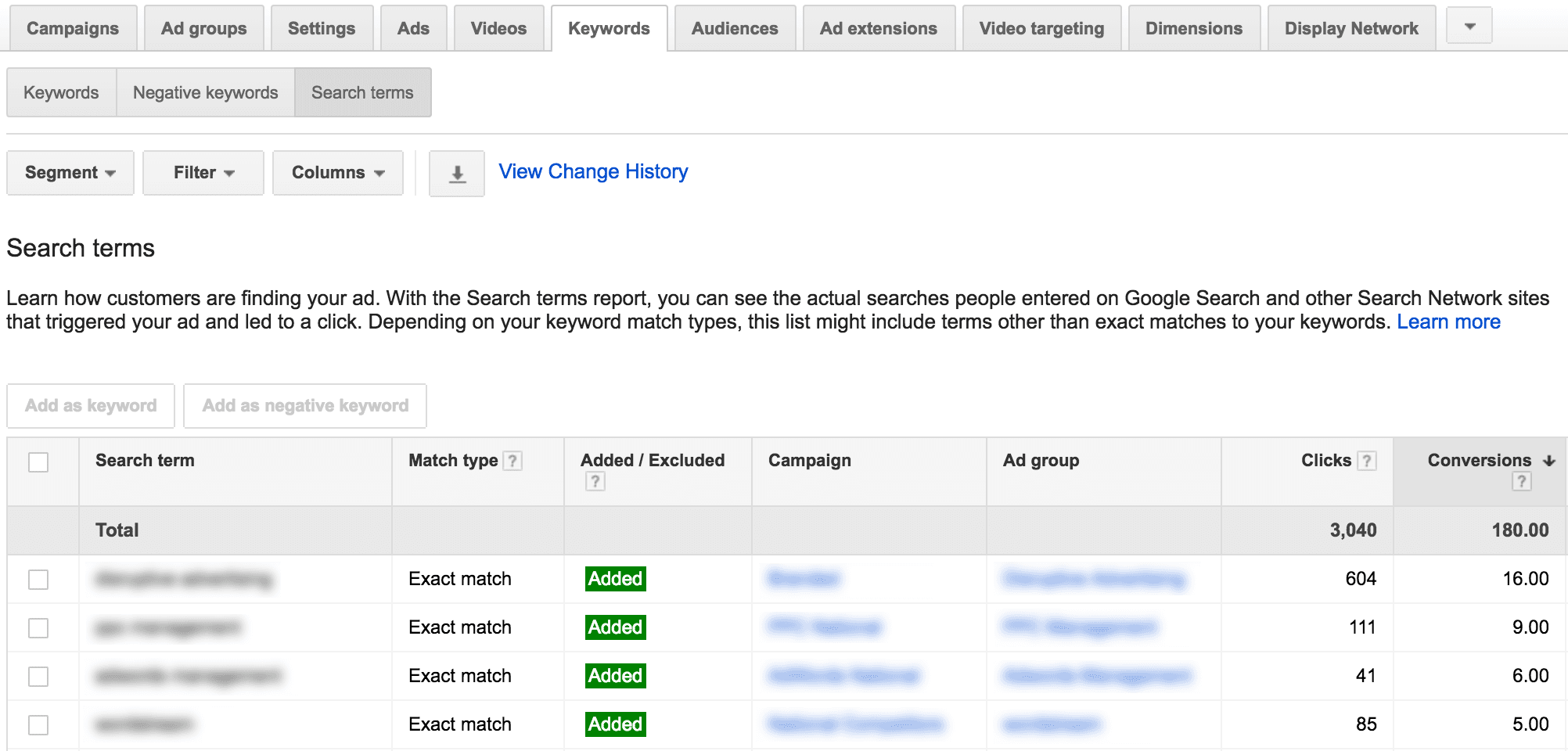
Sort by impressions, clicks or conversions to see which search queries produce the best traffic.
In general, most accounts have groups of 5-10 thematically similar search terms that produce great results for their business. Build keyword lists around those themes and use those for your contextual targeting.
Give Google a month or two to find the right sites and ramp up your ads, then filter through your Placements list and decide which websites are worth keeping (see previous section above).
3. Demographic Targeting
Demographic targeting is often one of the simplest, but least effectively employed ways to improve the performance of your display advertising. Typically, most advertisers forget to use their demographic data to check up on the performance of their ads. If most of your target market is males over 50 (for example) but your ads are showing primarily to women under 30, you probably have a targeting problem.
To do it right, though, we need to start with your Google Analytics data.
Open Google Analytics, click on “Audience,” expand the Demographics submenu and then click on “Overview.”
Next, change your segment to “Converters” as follows:
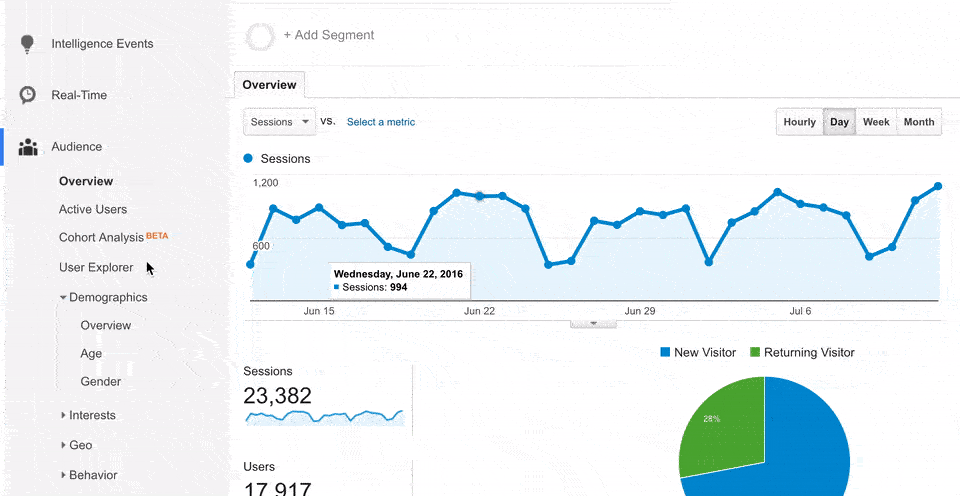
This simple report will show you exactly which age and gender demographic you should be targeting with your display ads.
For example, for the client in this GIF, it doesn’t make sense to target people younger than 25 or older than 44. They simply don’t get conversions from that audience.
If you don’t have conversion tracking set up in Google Analytics (shame on you!) or if most of your traffic comes through paid search, you can also get great insights into your target demographics using the Google Ads Report Editor:
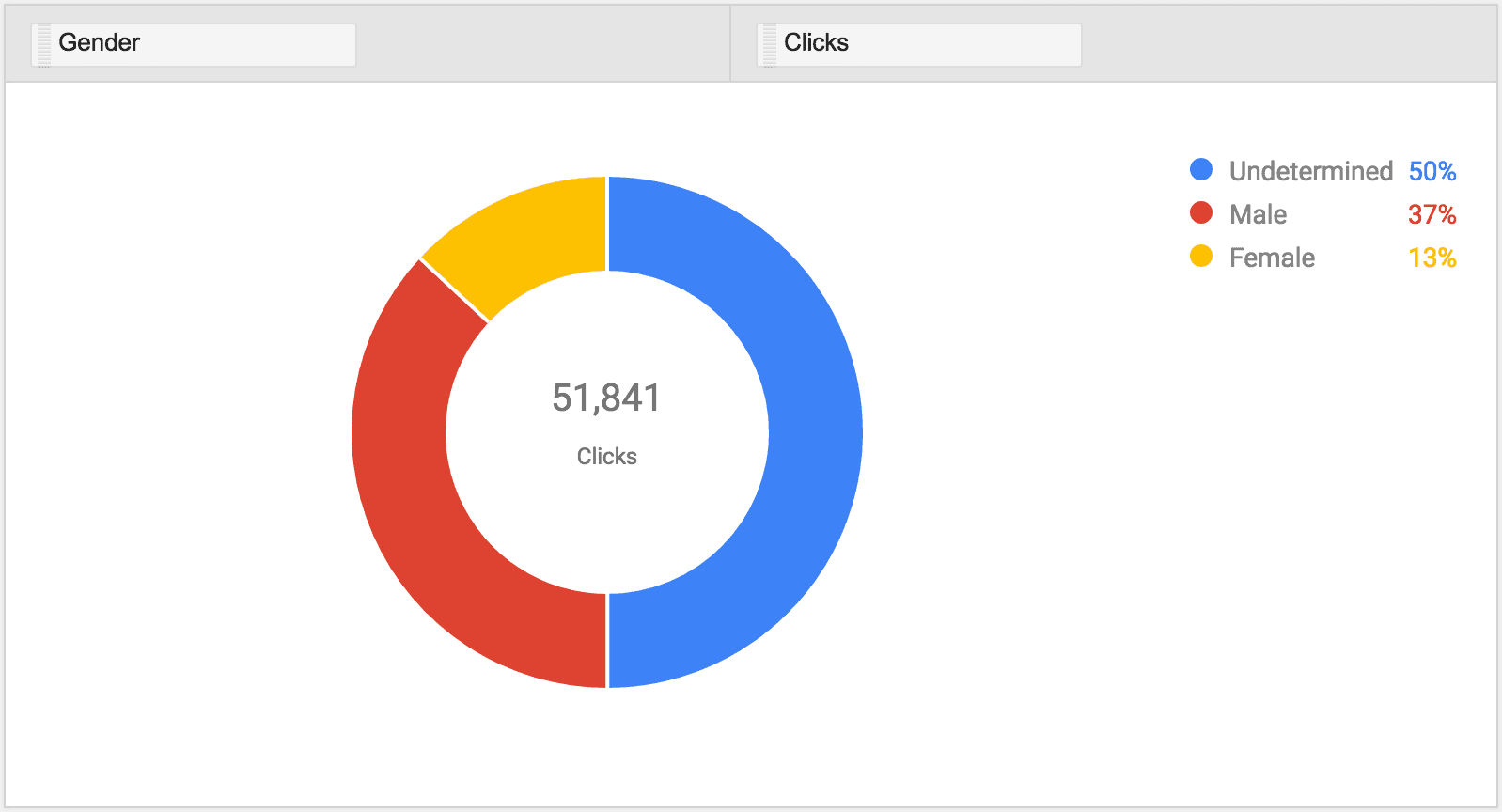
For example, here you can see that this client gets about 3x more clicks from men than they do from women. That means their ads should probably be more geared towards a male audience.
The Report Editor has the added advantage of allowing you to easily compare demographic information between your paid traffic sources. You can do this in Google Analytics as well, but you can really compare apples-to-apples with the Report Editor.
Now let’s take a look at your display advertising demographic data.
Open Google Ads, click on the appropriate campaign and click on Display Network. Click the Demographics tab:
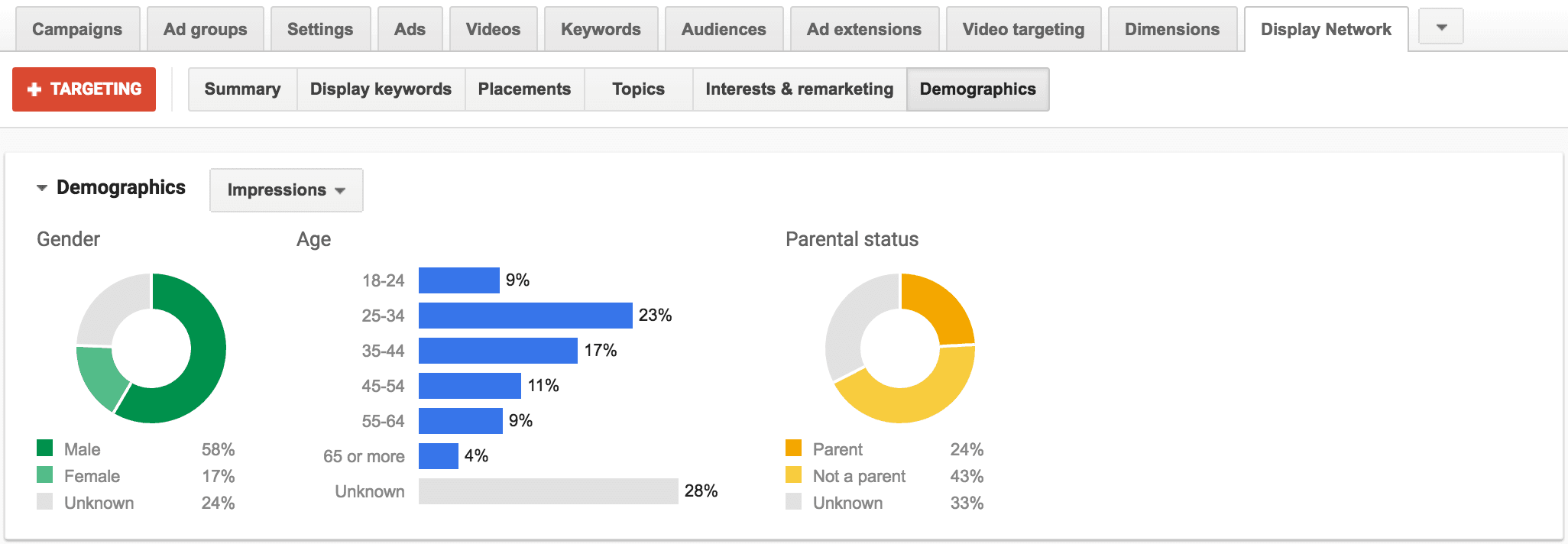
Here, Google gives you a lot of insight into the age, gender, and parental status of the people who see, click on, and convert from your ads.
For example, this data is from the same client’s account as the Report Editor data we just looked at.
As you can see, these display ads are getting 3.4x as many impressions from men as women, which is a pretty good match to the click demographics for their search ads. That means the display targeting is hitting a similar demographic to the client’s search ads, which is a good thing.
Do the statistics line up well with the demographics of the “ideal” traffic you identified in Google Analytics or the Report Editor?
If not, you may need to adjust your demographic targeting.
In addition to this information, Google Ads also allows you to get into even more specifics by creating demographic combinations.
So, if you’re curious whether or not it’s worth it to target 25-34-year-old women who have no children, you can use this report to see how that demographic segment interacts with your ads.
Conclusion
It takes a bit of extra effort to dial in the targeting for your display advertising campaigns. Without the correct targeting, though, your ads will end up in the following sort of situation (more often than most online marketers care to admit):

However, by using the analytics data, you already have to create a solid advertising strategy, you should be able to put your display ads in front of the right audience and drive more results your business craves. Then, drive those clicks to a dedicated post-click landing page, start creating your post-click pages today, sign up for an Instapage Enterprise demo now.
About the Author
Jacob is a passionate entrepreneur on a mission to help businesses achieve online marketing success. As the Founder & CEO of Disruptive Advertising, Jacob has created an award-winning, world-class organization that has helped hundreds of businesses grow using pay-per-click advertising and conversion rate optimization.

See the Instapage Enterprise Plan in Action.
Demo includes AdMap™, Personalization, AMP,
Global Blocks, heatmaps & more.

